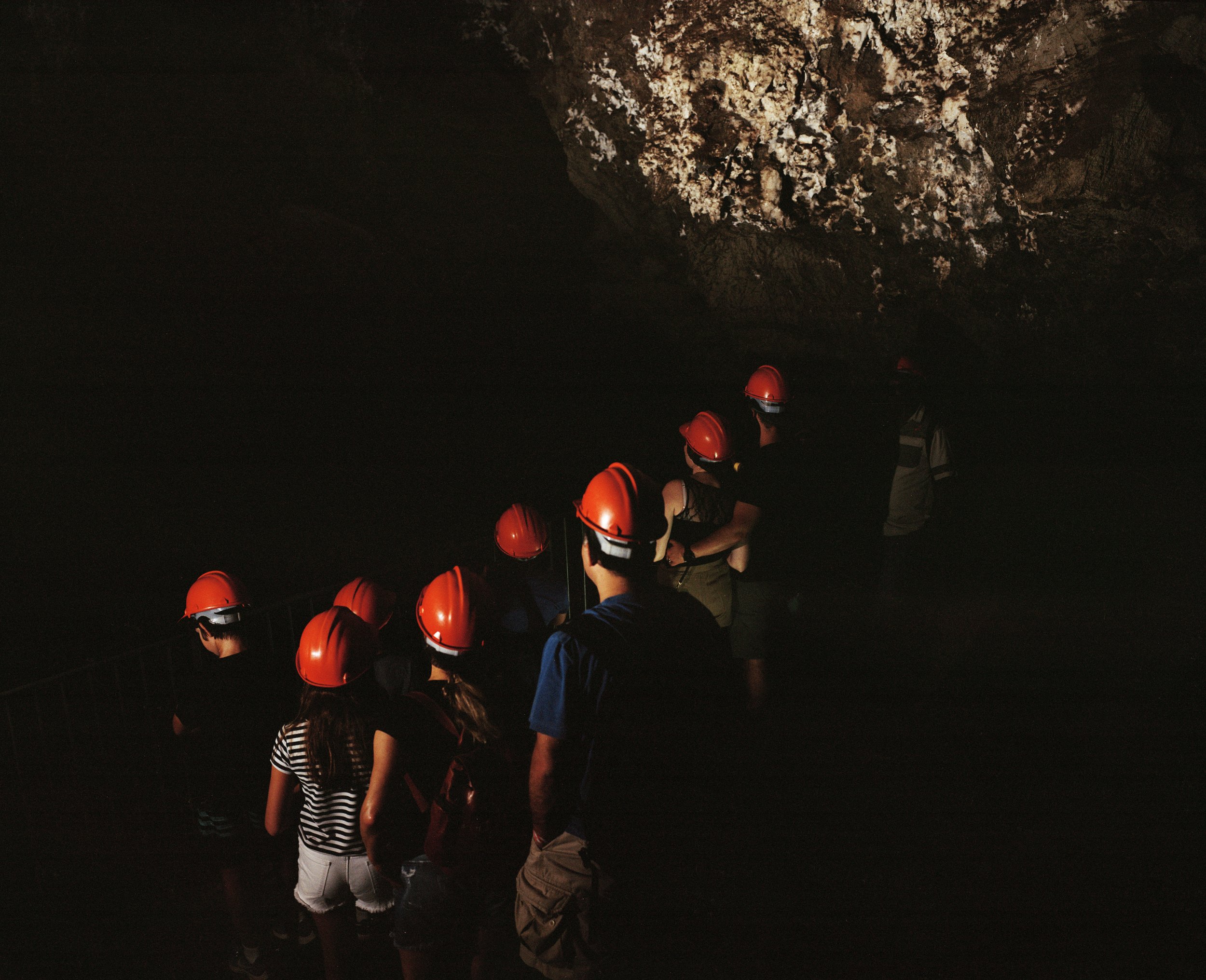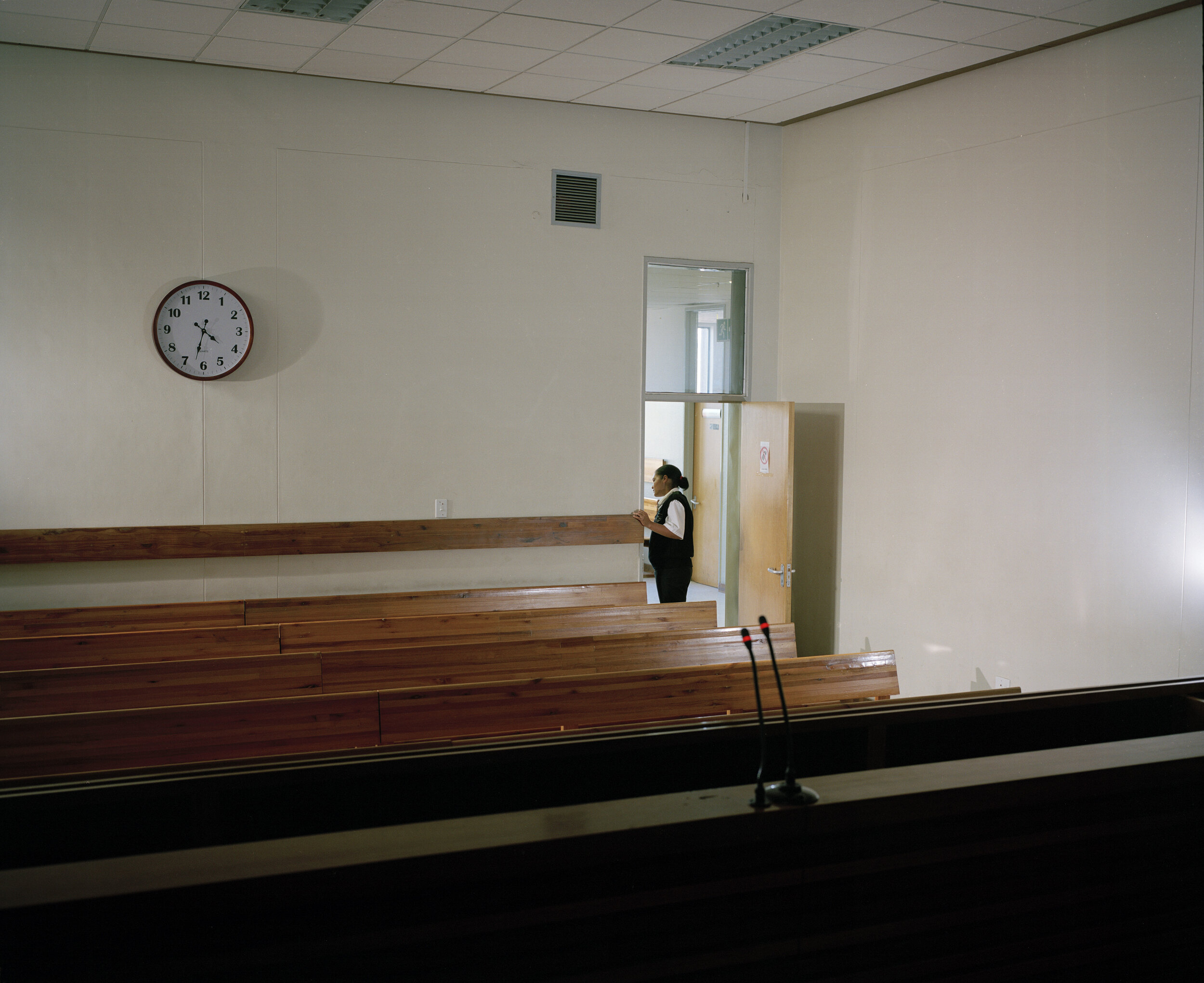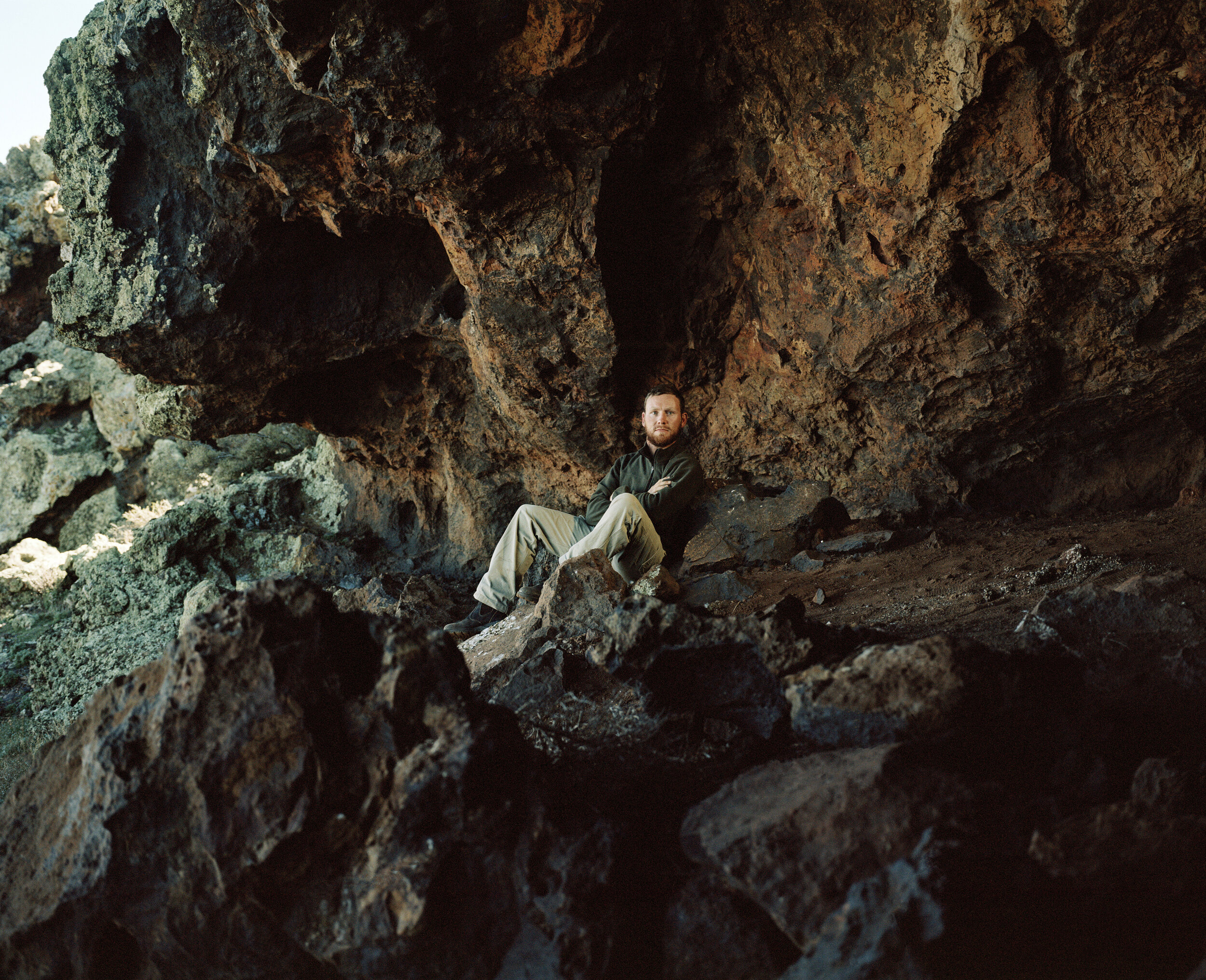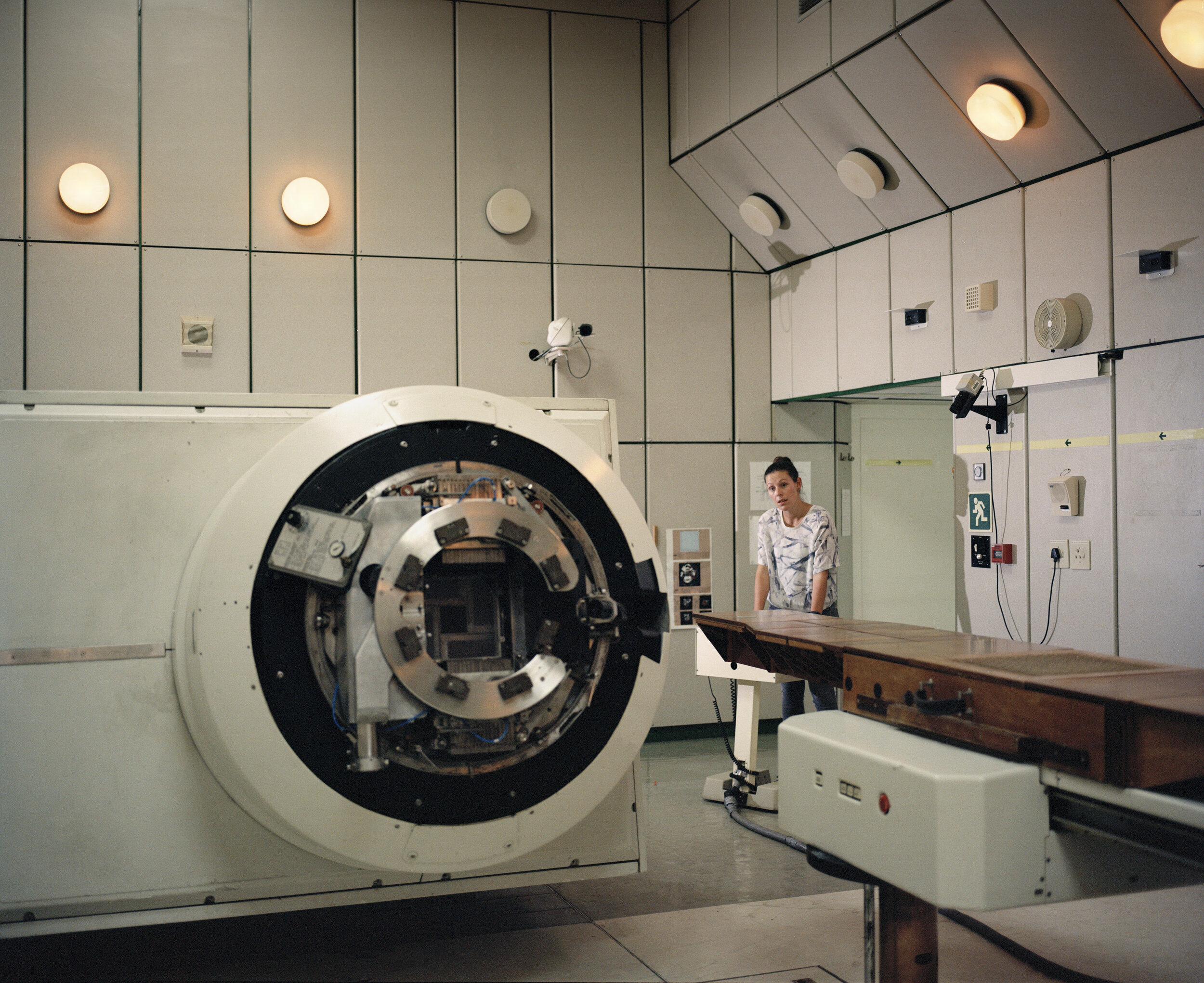'There are no traces of a city anymore, just ice. It is Jordaan who sees it first, a small glossy lump above the ice, a structure like a glass dome. There they will probably land.'
Photograph inspired by ‘Swart ster oor die Karoo’ (Black star over the Karoo) by Jan Rabie, 1957. Translated from the original Afrikaans. Upon travelling to the future earth where everyone is living underground to stay alive, the main characters land on top of Table Mountain.
“The prisoner will finish three months of hard labour and then be sent away. Constable, remove him.”
Then Loeloeraai took his first part of the events.
“Wait, constable,” he says, “I’ve got something to say to the magistrate. Official,” he continues to the magistrate, “I don’t blame you. You are doing what you perceive as your duty. I also have a duty that I’m committed to - a commitment to myself and to those that I represent here alone. In the world that I’m coming from, we are law abiding, not under the force of the magistrates and constables and jails and chains, but out of love for one another.’
From Loeloeraai, 1923, CJ Langenhoven (Translated from the original Afrikaans)
“The prisoner will finish three months of hard labour and then be sent away. Constable, remove him.”
Then Loeloeraai took his first part of the events.
“Wait, constable,” he says, “I’ve got something to say to the magistrate. Official,” he continues to the magistrate, “I don’t blame you. You are doing what you perceive as your duty. I also have a duty that I’m committed to - a commitment to myself and to those that I represent here alone. In the world that I’m coming from, we are law abiding, not under the force of the magistrates and constables and jails and chains, but out of love for one another.’
From Loeloeraai, 1923, CJ Langenhoven (Translated from the original Afrikaans)
The Sun Man, as some refer to him, stares at the sun every day. He makes a little hole between his fingers to protect his eyes, but they still become red and swollen on some days. We realised that he changes position and posture based on the availability of sunlight in certain areas and the position of the sun. When it is midday for instance, he needs to sit down to be able to lean back and stare straight up to the sun.
Why do you stare at the Sun?
'For no reason.'
What is your name?
'Sugar.'
And your surname?
'Su... Ga.'
’I’m actually from Kuilsriver, but we moved to Paarl and I got heavy asthma - so we decided to move here. Since we’ve been here I don’t get any asthma - nature became my health-pill here. I’m relaxed. We are totally off the grid - we don’t have a landline, or cell reception and the police van doesn’t even catch his radio signal here. We are cut off from the world and like it that way - and the kids can’t bother us unnecessarily. We do go to town once a week and then they can reach us. If there is an emergency the police will come out and call us. I prefer this place, because here you can actually see the stars - you get the feeling that they are so near that you want to pick them like flowers, while in town you don’t see it as there are too many lights around you. Here you get the darkness and it is so near to nature.’
'You have got a number of control systems together here... the interlock system it shows that the personnel, as well as the equipment, are safe. If anything does happen the interlock system PC will be aware of default. Anything highlighted in red shows that there is a problem here. Using the Interlock system we can track down the source of the area.'
Dr Pete Jones in one of the experimental area at iThemba LABS checking the end of a beam line (called beam-dump). This part is where the accelerated charged particles that haven’t interact with the target nuclei are stopped.
‘I photographed this from my backyard here in Brakpan - in the middle of the city. I use multiple different filters like hydrogen alpha, sulphur two and oxygen three. Those filters only allow a narrow spectrum of light through of 6 nanometers. That basically blocks out all the light pollution that one gets in the city, so you can get high-quality pictures from town.’
’You have to be devoted, I’m basically outside every night. I meet so many people, and it gives me a reward - when people say they enjoyed it. Lastly I would say you learn how insignificant we are in the greater universe and it makes you feel humble - that is the way I want to look at it every night.’
Jurg Wagener, Star Gazer
”Sarie, loving, loving child. Listen. I am what you can become, and you are what I want to become.” - Eva Stellaris to Sarie, Swart ster oor die Karoo by Jan Rabie, 1957. Translated from Afrikaans to English.
Photograph inspired by ‘Swart ster oor die Karoo’ (Black star over the Karoo) by Jan Rabie, 1957
’And then we have Betelgeuse, that's a very important star. It's in the Orion constellation and some scientists to say it's already gone supernova. Some say it still has to. As astronomy is a science, it's still being looked at and studied, so we always say nothing is fact until it is proven. Why? Because man hasn't been in space - we cannot get there. We cannot really study the stars. We don't know anything until we actually have the facts - we do by mathematics and other subjects study space and the universe, but all of it is theoretical until we can prove it's fact.’
"Follow me," said Eva Stellaris quietly, and stepped forward, through the milky wall. "Goodness me!” whispered Jos. "It's going to open just like intelligent glue!"
Photograph inspired by ‘Swart ster oor die Karoo’ (Black star over the Karoo) by Jan Rabie, 1957. In the novel future humans are living inside Table Mountain as it is too cold outside. There are no doors, but mirror like walls that you can walk through - but only if you are calm. Wouter ended up forgetting this and ran angrily towards someone, straight into the wall like you would run into a closed glass door, coming face to face with himself.
'So once the particle reach their maximum energy, then, they get extracted again, and get sent down to wherever we want them to go, for experiments or isotope production.'
Dr Ricky Smit is showing a schematic representation of the principle of acceleration of the charged particle through the Separated Section Cyclotron (SSC) at iThemba LABS.
’You have to be devoted, I’m basically outside every night. I meet so many people, and it gives me a reward - when people say they enjoyed it. Lastly I would say you learn how insignificant we are in the greater universe and it makes you feel humble - that is the way I want to look at it every night. If you look at the whole concept, I have to agree that it is not only our world - it is such a vast area, it is a never ending story… where do you stop, where do you begin? Once again it makes you feel very humble.’
Jurg Wagener, Star Gazer
The thing is we observe most of our targets for other people, so we don’t really know exactly what they are. We sort of understand a little bit. My job is mostly to make sure that they get their data properly, but their science reasoning is not my specialisation.
Dr Charlot Vandevoorde is positioning the wooden table where the biological sample will be place for a neutron beam irradiation. The study on the response of cells to neutron irradiation is a crucial aspect for the feasibility of future human mission in space.
‘…“No,” the professor murmurs disdainfully. “No, I believe it comes in peace. No, the lines are too harmonious to be designed by devils.”
…Then the automatic outer door closes quickly behind him. While groups of men in the glass dome stares out anxiously into the ice night where the flying saucer with an unearthly glow sits dead still on the runway, and dr. Eva Stellaris also stands without motion in front if the foot thick window, the lonely figure of professor Mertyn moved closer to the cosmic visitor.’
Photograph inspired by ‘Swart ster oor die Karoo’ (Black star over the Karoo) by Jan Rabie, 1957. Translated from the original Afrikaans. The characters encounter a constant tension between the expectation of fear and violence and peaceful curiosity towards their visitors.





























